The dates were decided, the itineraries set, the AirBnBs booked. Athens, Santorini, Florence, and Rome. We thought the plan was airtight. But COVID-19 travel restrictions thought otherwise.
With just enough time to start planning our honeymoon from scratch, we began sniffing around for places we would be able to go. And sure enough, three months later, we were making our way to Cairo International Airport, boarding our flight to Zanzibar.
What we did not expect just then was that the honeymoon we ended up planning in the nick of time would be the most unique and memorable experience we could have possibly hoped for.
Warere Beach Hotel
From the moment we arrived at Abeid Amani Karume International Airport in Zanzibar, we found ourselves surrounded by the most saturated tones of green. From towering palm trees to broad banana leaves, trees were never out of sight.
Though entry visas could be acquired on arrival, we were lucky enough to have the help of an Egyptian startup called Honeymoon Creators in organizing the trip. So, visas in hand, we were out of the small airport in under 30 minutes.
Before we knew it, we were on a long, and very bumpy, ride to our first hotel with the help of Charles, who had agreed with Honeymoon Creators to be in charge of taking us around Zanzibar for the coming week.
Warere Beach Hotel felt like summer: from the cool, hard floors, to the sweet, zesty mango and passion fruit welcome drinks, to the view of the open ocean – it was a peaceful hotel with a warm and friendly staff, high canopy beds, and a pool overlooking the sea.
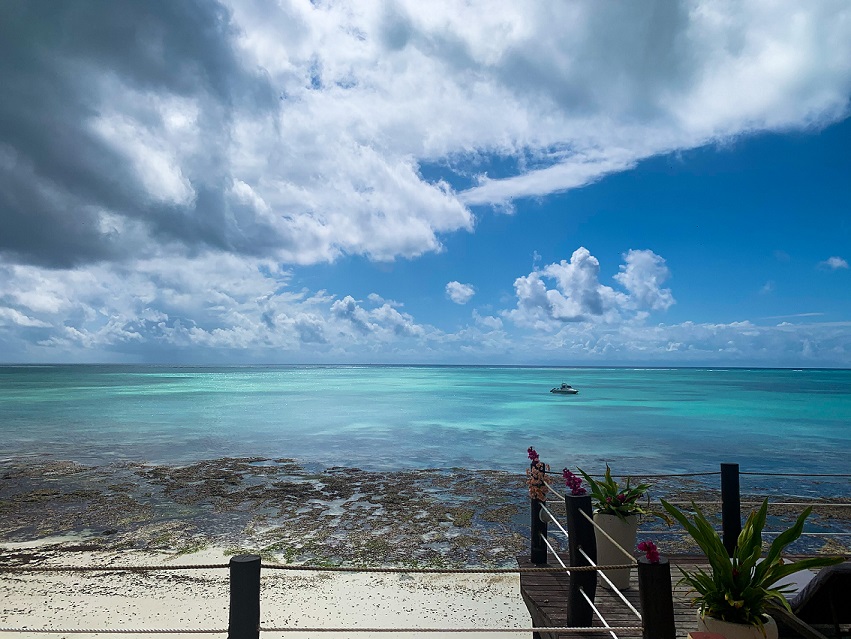
From our place in Nungwi, the northernmost tip of Zanzibar where the hotel was located, most of our daily activities would take quite a drive, but on our first day we started slow with activities only a walking distance away from us: a turtle sanctuary where we swam with and fed dozens of hungry turtles, and a little maze of a zoo where we got to meet a variety of animals, from antelope to chameleons, native to Zanzibar and mainland Tanzania.
The following trips, however, took us through the depths of Zanzibar and out onto the turquoise seas around it. As Egyptians, beach holidays are neither new nor easily impressive for us, but Zanzibarians’ love for their most precious gems and resources was evident in their crystal clear and clean waters and untouched forests.
Our first boat out to sea was a rickety one, captained by two teenage boys who worked in the tourism industry part-time alongside their studies. They took us out to the waters surrounding Mnemba Island, which is privately owned and quite expensive to visit. More accessible, however, were the waters around it, where we snorkeled and even, at a distance, spotted a few dolphins.
Though we were back in our hotel before the sun was fully down, we had just enough time to sit down to enjoy the catch of the day. As we sat on a bench on the beach, we waited as a cook prepared our meal on a beachside grill. Soon enough, we were handed a plastic platter full of lobsters, prawns, fish, squid, octopus, and fries, along with coconut rice and a spiced tomato sauce filled with vegetables that they simply referred to as ‘sauce’. Even for us – not the biggest fans of seafood – this was a meal of undeniable quality and freshness.
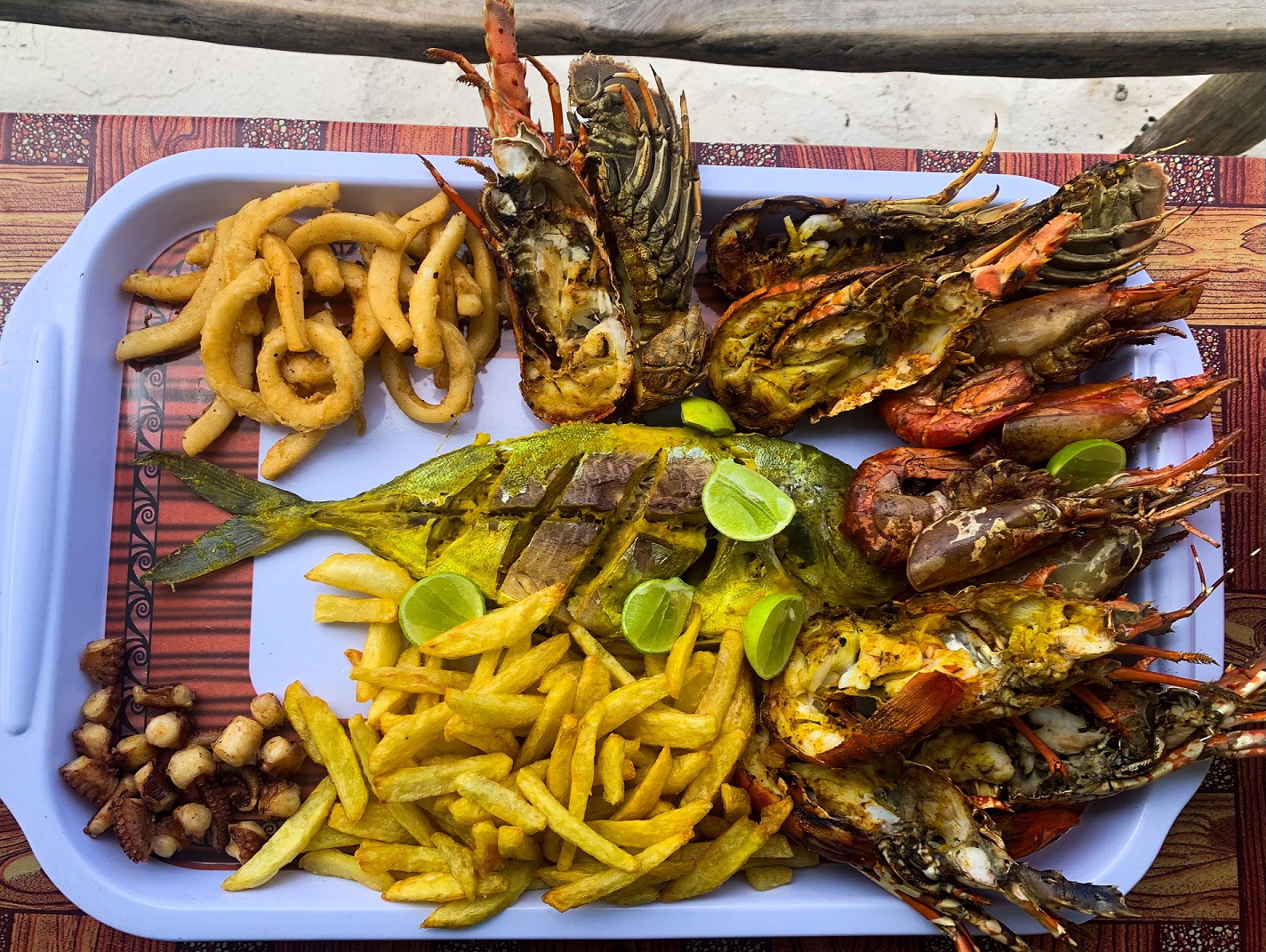
The following day was one of the highlights of our trip to Zanzibar. This time on a bigger, sturdier boat, and with another couple aboard with us and the three guides, we went out to sea again to a tour popularly referred to as ‘Safari Blue’.
Our first stop was not on land. We hopped off the boat and straight into the clear green waters of a hidden lagoon full of mangroves, a type of tree that grows in saltwater. Though we were most certainly not alone there, the place imposed a quiet peacefulness on all the tourists that enjoyed it. The seafloor was rough, but luckily the water was both clear and shallow, and allowed us to wade carefully through the lagoon to look at the rock formations and the trees that protruded from the ocean.

Our guides had to persuade us out of the water so we could sail on to our next stop of the day. But luckily for us, what they had in store even before we made our next stop was worth it: as we moved away from the lagoons, one of the guides took out a knife and began cutting up fresh fruit. There was mango, coconut, banana, watermelon, and pineapple. Assuming he was simply preparing himself a snack, we thought nothing of it.
But when he arranged the fruit on a platter and told us it was for all of us to share, my husband and I, the other couple travelling with us, and our three guides tucked into what was without a doubt the best fruit I had ever eaten in my life. With every bite of mango, and every bite of pineapple, I felt as though I had never really eaten fruit until that moment.
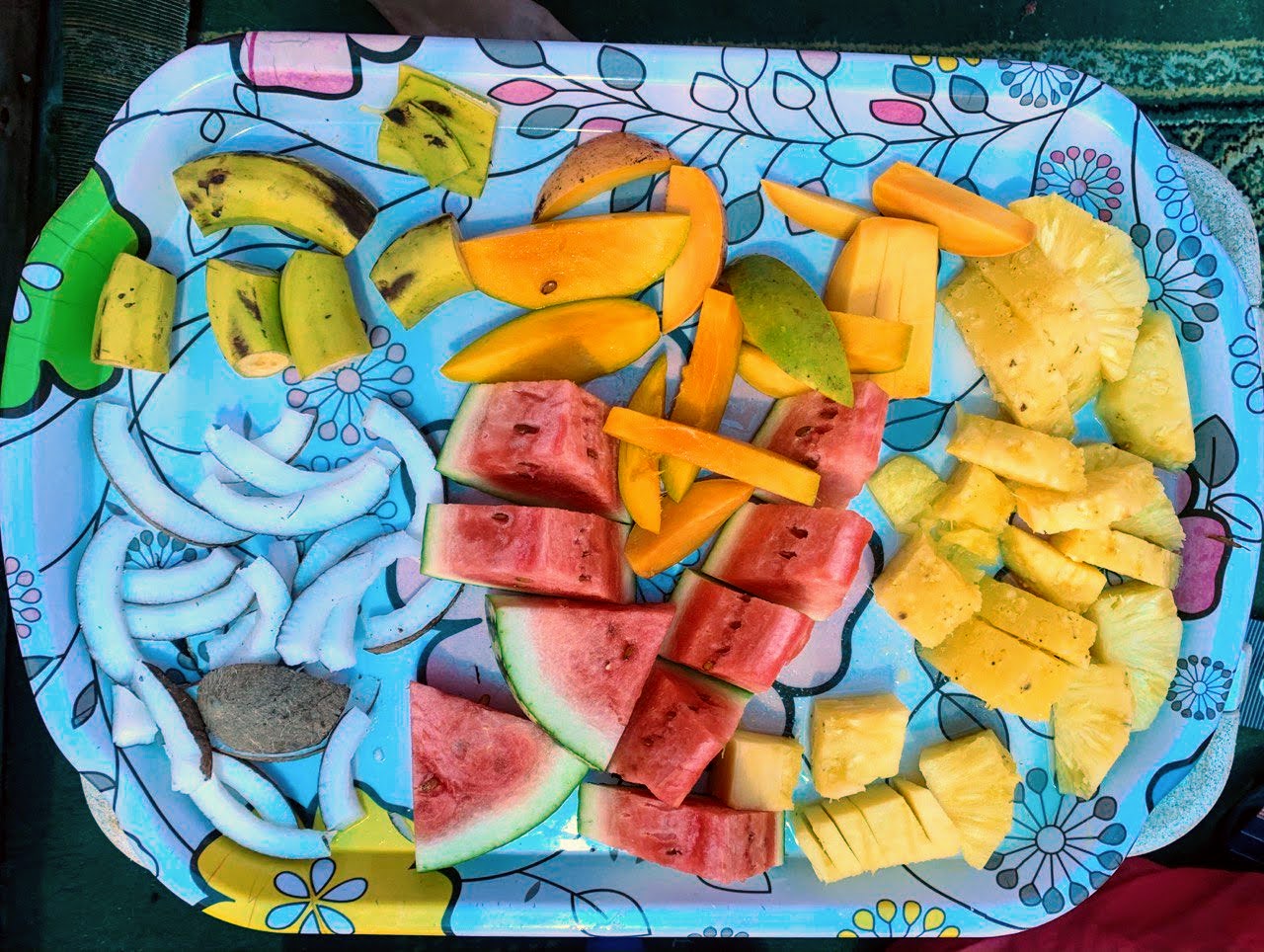
We did not stop until only the peel of the fruit remained, and luckily it came in handy for our next stop; on our way to Kwale Island, we stopped to snorkel, and the fruit peel helped to attract the fish.
We arrived at Kwale Island at low tide, so our boat was anchored quite the walk away from the island. We had to walk carefully as with almost every step we took, we saw small, fragile, and almost completely transparent crabs that scuttled so lightly over the sand that they may as well have been leaves in the wind. After another seafood platter and a visit to Zanzibar’s oldest Baobab tree we headed back to the hotel.
On the last day of our stay in Warere Beach Hotel, we headed to a spot near the eastern coast of Zanzibar where we were told we would find a limestone jungle cave called Kuza Cave. After asking for directions multiple times, we found a cool, dark cave filled with crisp, crystal clear turquoise water. We were already in the water when we discovered we were not in Kuza Cave at all, but in Swahili Cave, a similar, though less famous spot. We did not mind, as all this meant that we would have the chance to visit yet another one of these underground oases filled with fresh water and uninhabited by any fish.
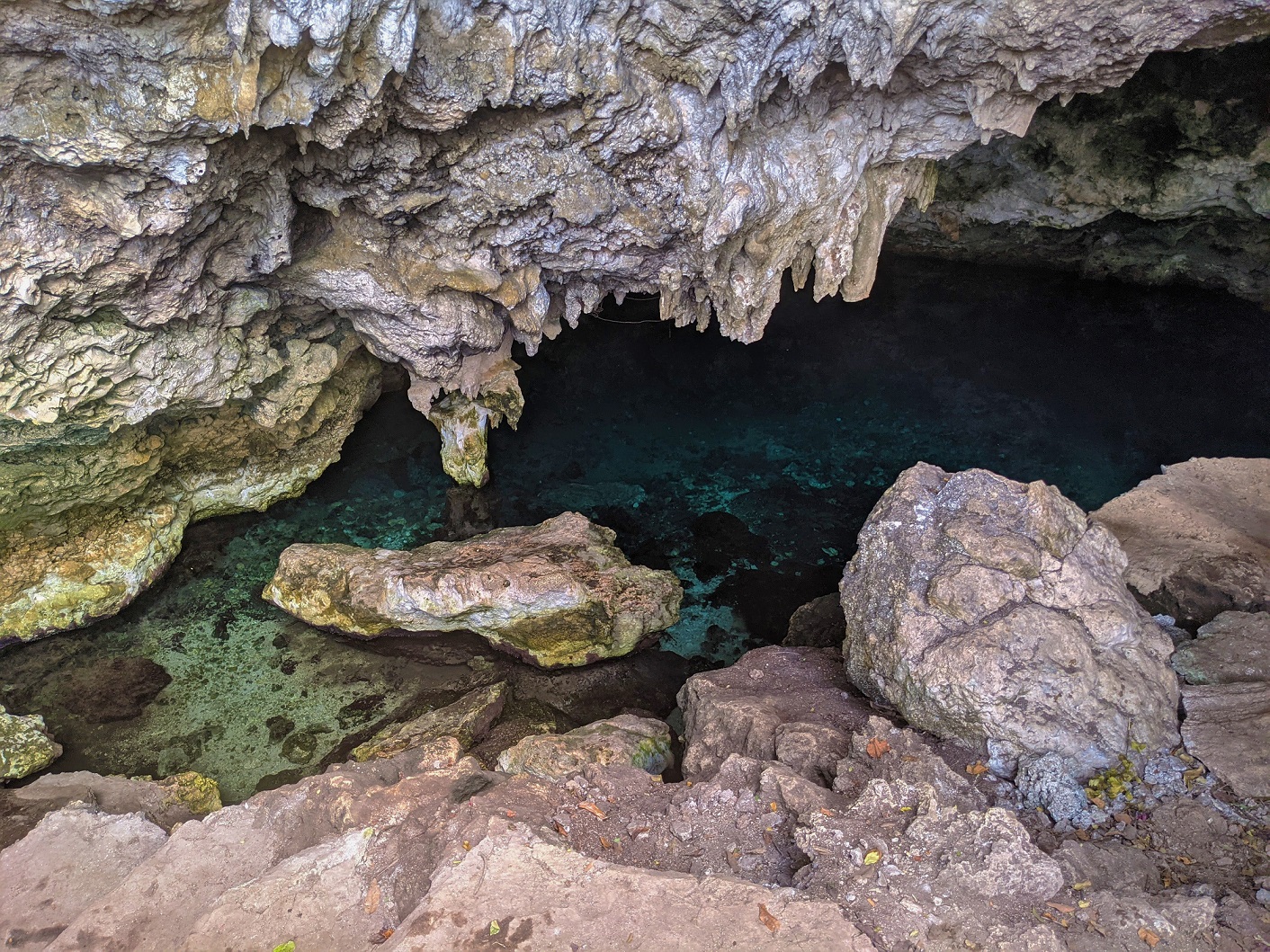
To finish off the day, we went for dinner at what is probably Zanzibar’s most iconic restaurant. Standing tall on a rock that was surrounded by water at high tide was The Rock restaurant, which blended homemade Italian pasta with fresh local ingredients to make the most unique fusion dishes. Though our main dishes were delicious, our favourite order there was the coconut tiramisu.
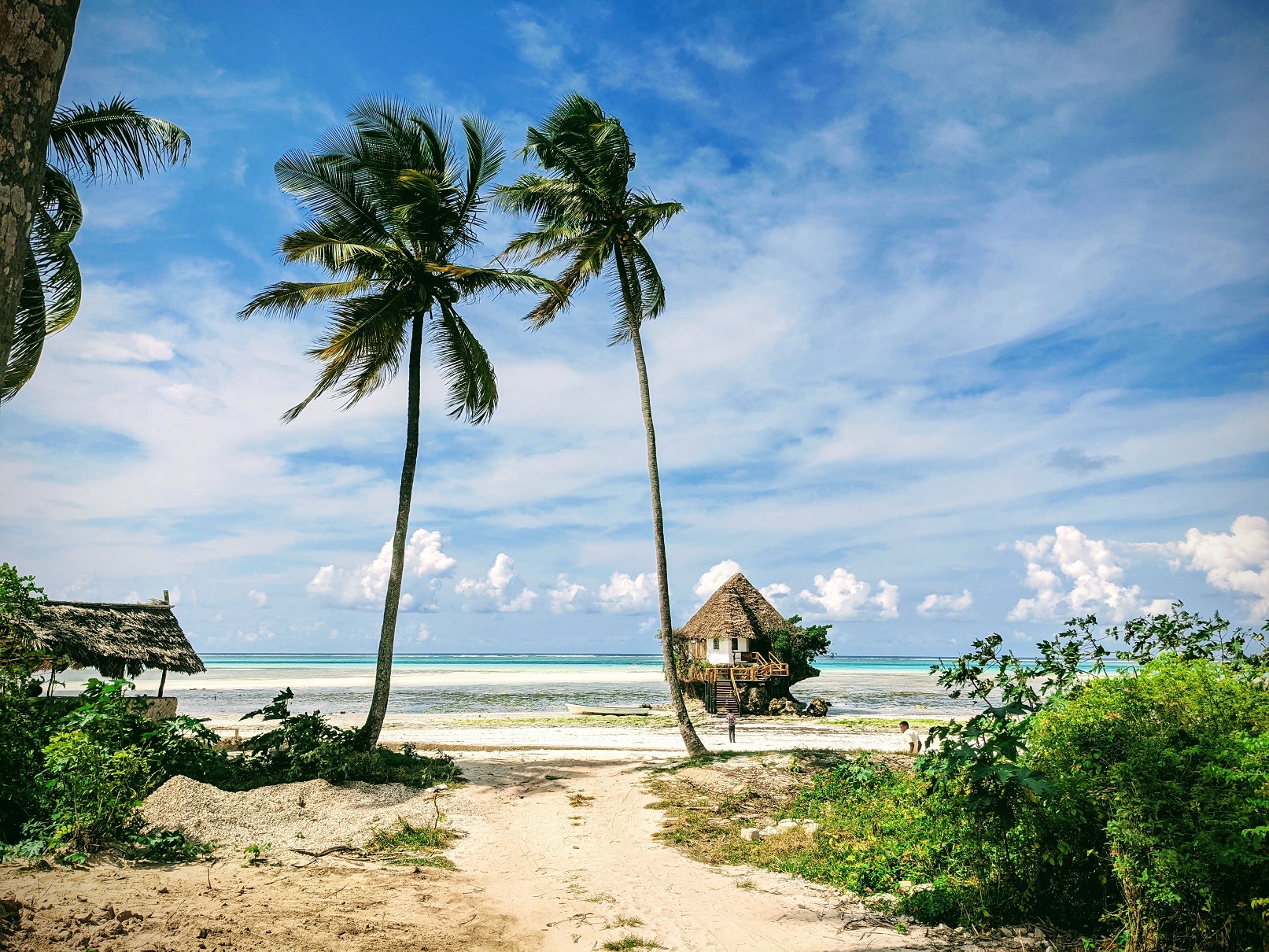
And so our time at Warere Beach Hotel came to an end. We did not know it at the time, but by the end of our trip it had become our favourite of all the hotels we stayed at. Though we would miss evenings spent under the stars listening to the roar of the Indian Ocean, we were ready for our next adventure in Zanzibar.
Beyt Al-Salaam
We awoke early to make our way to Beyt Al-Salaam – a hotel in Stone Town, a trading center, UNESCO Heritage Site, and the main city in Zanzibar. Lying on the western coast of the island, Stone Town stands in sharp contrast to the quaint and rural rest of Zanzibar.
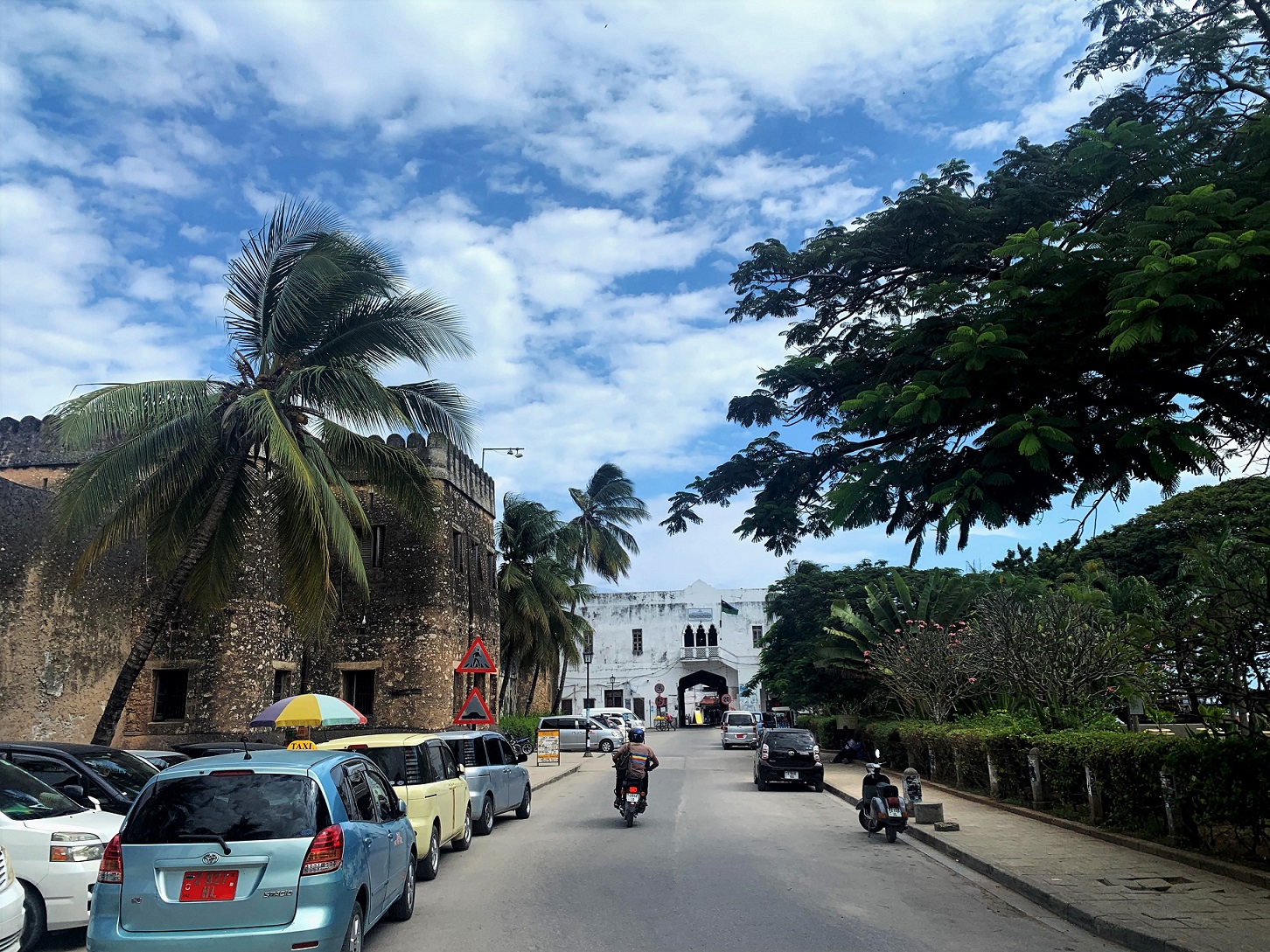
With little regard for the dangers of COVID-19, locals and tourists walked the streets, shops, restaurants, bars, and markets of the of the city, enjoying its perfect weather and narrow, shop-lined streets.
Nemes, our guide through the final three days of our stay in Zanzibar, showed us how at every turn, Stone Town showed signs of the mingling of African, Arab, Indian, and European histories, whether in its all-stone architecture, the unique goods on sale, or in the town’s culture and traditions.
Though every moment spent in Zanzibar was breathtaking, the tour of one of the spice farms on our first day in Stone Town was another true highlight. With a farmer named Omari at our side, we walked through trees that yielded everything from coffee and vanilla beans to ginger and turmeric roots. We saw how nutmeg looks on the tree and how pineapples grow. We tasted jackfruit right off the tree and saw the tiniest chili peppers imaginable.

At the end of our walk we sat down at a clearing and were given coconuts of varying ages to taste the water and flesh of each stage of a coconut’s life. And then, a man of 56 nicknamed Butterfly asked us where we were from and incorporated Egypt into his song entitled Hakuna Matata as he climbed the long, narrow coconut palm tree in front of us.
Before we left, a spice vendor on the farm took us, Nemes, and Charles to his home, where he cooked a variety of dishes for us containing plantain, okra, chicken, fish, spinach and more. It was a day that was hard to top.
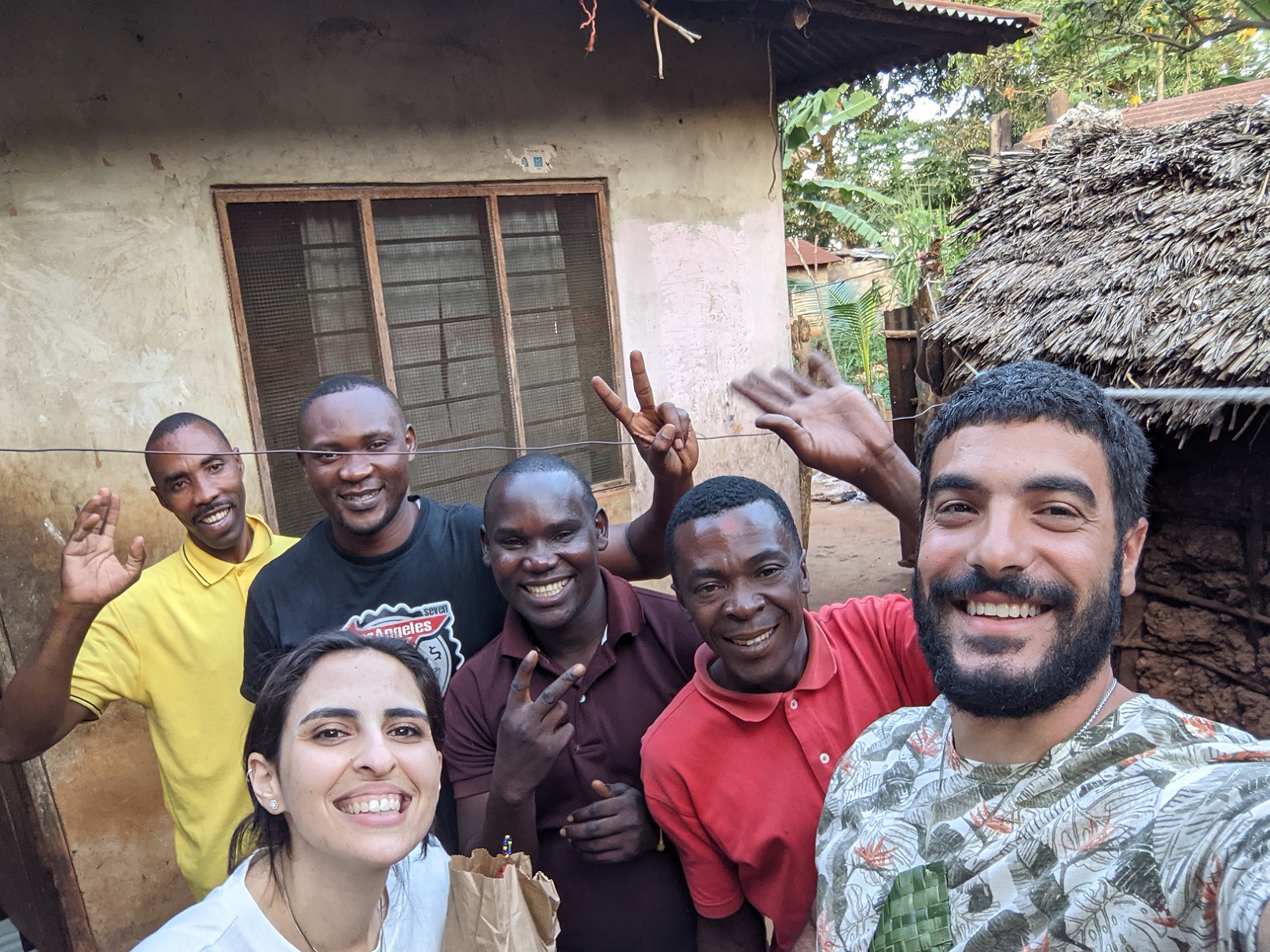
Our trip the following day once again took us off Zanzibar’s main island. Initially built as a prison for those who defied the laws against slave trade, the main complex on Prison Island, as it was known, never served its intended purpse due to the outbreak of the cholera. Its isolation made it an appropriate spot for a quarantine hospital, with cells becoming enclosed rooms for the patients. The brightly coloured walls and the brilliant blue ocean felt dissonant to its dark history. Today, however, Prison Island is home to a tortoise sanctuary inhabited by tortoises as old as 196, not to mention a large number of peacocks.
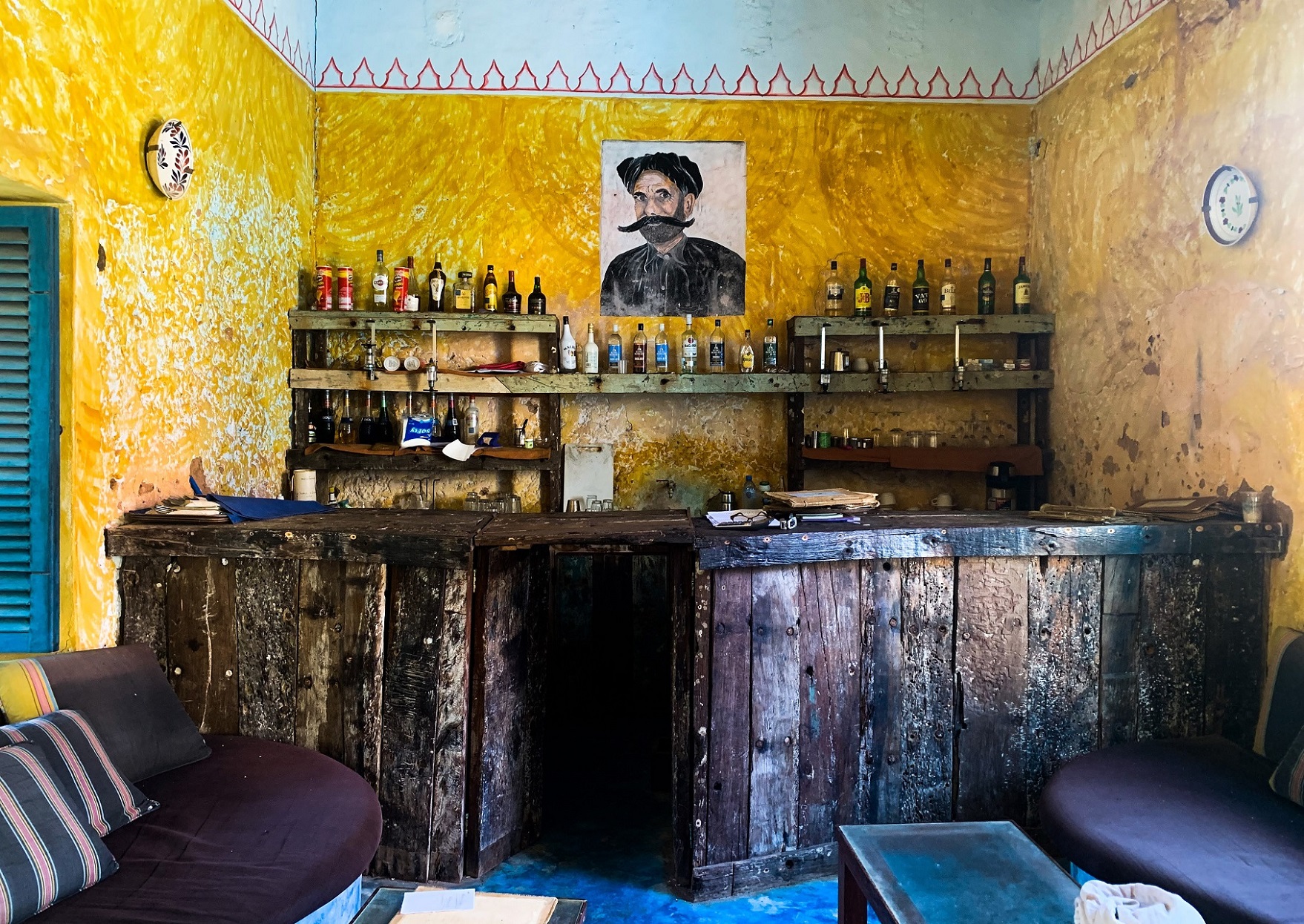
On our final day in Zanzibar, we awoke earlier than any other to take the Kizimkazi dolphin trip. They told us that if we wanted to get a closer look at the dolphins that frequented the seas around Zanzibar, we would have to be out on the ocean before eight in the morning – and that is not counting the nearly two-hour drive to get to Kizimkazi.
That morning was the most overcast since our arrival. Along with Nemes and the captain of our boat, we climbed aboard a tiny vessel that left practically no space between us and the water. The sea that day was rough and there was little to cushion the slams of our boat against the waves. As we sailed deeper, we came across others on their way back. Though they had seen dolphins, Nemes told us we may be too late to find them ourselves.
Uncomfortable and cold, I had begun to give up on our chance to see the dolphins, coming to terms with the fact that the small glimpse we caught at the beginning of our trip would be all we would get. Just then, Nemes spotted them. A whole family of dolphins was swimming no more than five meters away from our boat, with a dolphin calf frolicking in their midst. Apparently not bothered by us, they continued to disappear and reappear around us for a while before they slowly started moving into the depths of the ocean.
The burst of optimism I got from finally spotting the dolphins proved a necessary one. On our next stop, a hike through Jozani Forest, it once again took us a while to find our primary target: the endangered Zanzibar Red Colobus monkeys that are unique to the island. We had almost made up our minds to return to the car when we found a family of them at the top of a high tree.
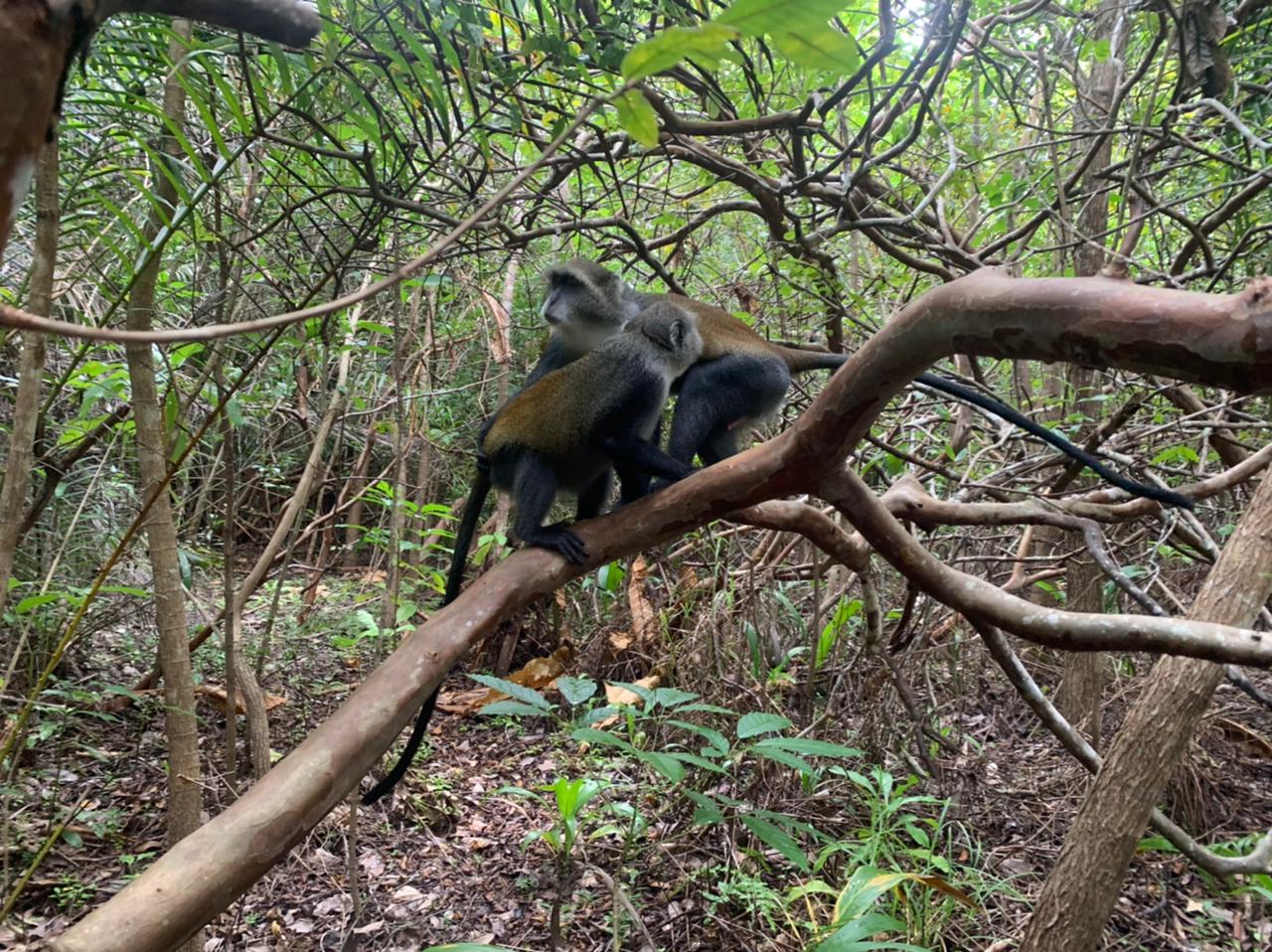
Zanzibar’s sendoff for us was as good as everything else on the trip. Our final dinner in a restaurant’s balcony hanging over the sea was punctuated by unexpected laughs when first a man eating at the restaurant told us and all the other patrons that he had lost a bet and asked us if we minded if he jumped off the balcony into the ocean. Nobody minded, and he did a flip. And then after enjoying several Western hits from the live band serenading the diners, our ears were suddenly surprised by a perfect rendition of Amr Diab’s Tamally Maak, ensuring that our final evening in Zanzibar would be a memorable one.
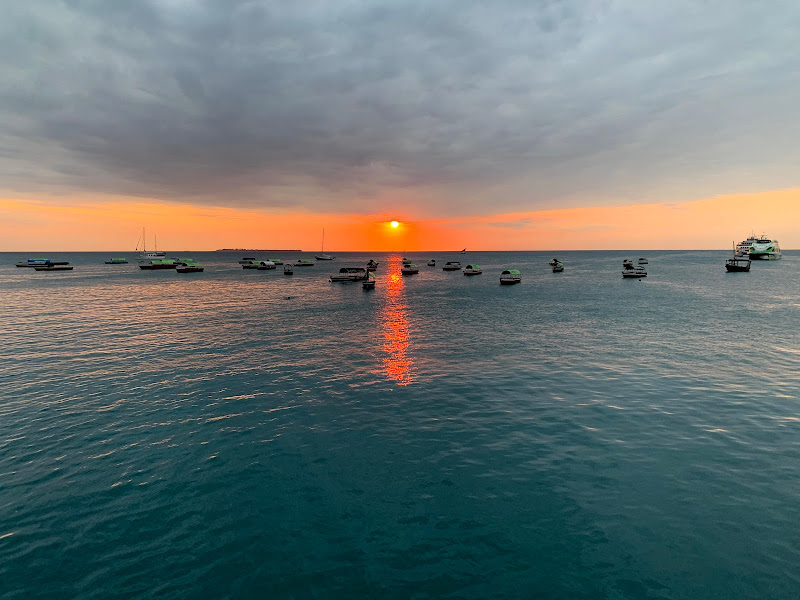
With a heavy heart we departed Zanzibar carrying the wooden, Zanzibar-shaped keychains Charles had had our names carved into and given to us as we left to board our plane. But our next stop was Nairobi, and it couldn’t come too soon.



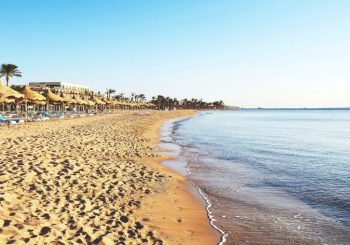

Comments (3)
[…] Source link […]
[…] المصدر by [author_name] كما تَجْدَرُ الأشارة بأن الموضوع الأصلي قد […]